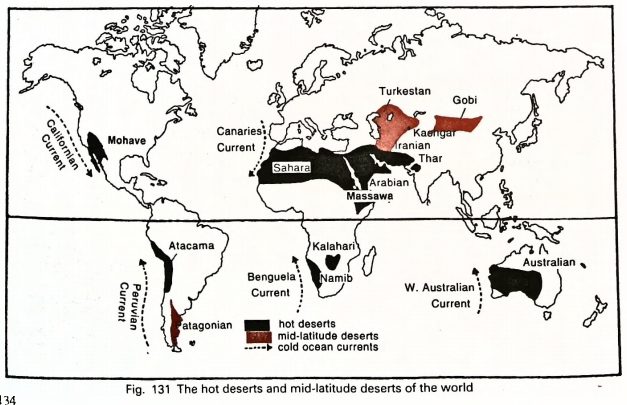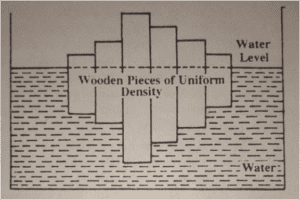
As you follow the Tropics of Cancer and Capricorn, thirty degrees on either side of the equator, you will see, distributed with suspicious regularity an earthy colored band of drylands surrounding the planet, a sere belt averting greener climes: the deserts of the world. They lie in the so-called Horse Latitudes, where constant high-pressure systems drive away the rain clouds.
Why are deserts often located at 30 degrees from the equator ?
There are four major reasons responsible for why the major hot deserts of the world are located between 20° – 30° N on the west of the continents:-
Offshore trade winds
- Offshore trade winds in the region and location in rain shadow zone – Trade winds that blow in the region, shed their moisture on the eastern part and by the time they reach the western margin, they become dry.
Anticyclonic conditions
- Areas between 20–30 degree latitudes on western margins of continents are the regions of descending air. It means the air gets compressed and warm as it descends and thus the moisture holding capacity keeps decreasing.
Leeward sides of mountains/Parallel mountain ranges
- In the case of few deserts, mountains are situated as a barrier which prevents orographic rainfall. For example:- presence of Rockies on the western coast of North -America does not let moisture bearing winds do rainfall in leeward sides. In the case of Thar desert in India, Aravallis are situated parallel to the region. Therefore the moisture holding winds pass away from the region because there is absence of mountain barriers.
Presence of cold ocean currents
- Presence of cold ocean currents along the western coast of continents – tend to stabilise the air over the coast. This prevents cloud formation and rainfall



